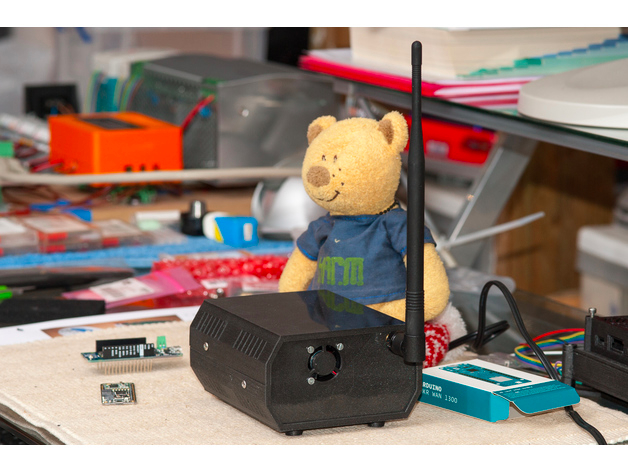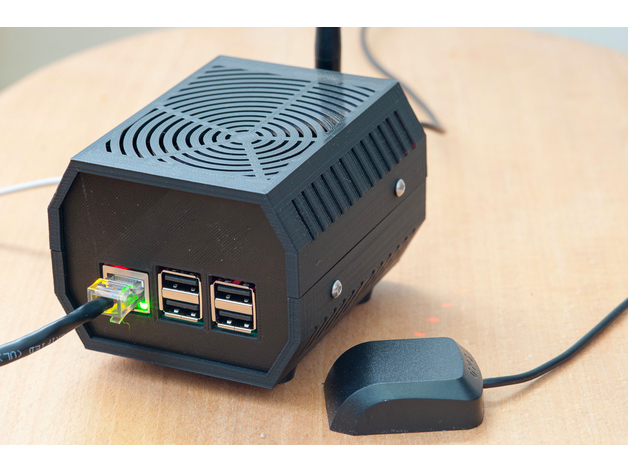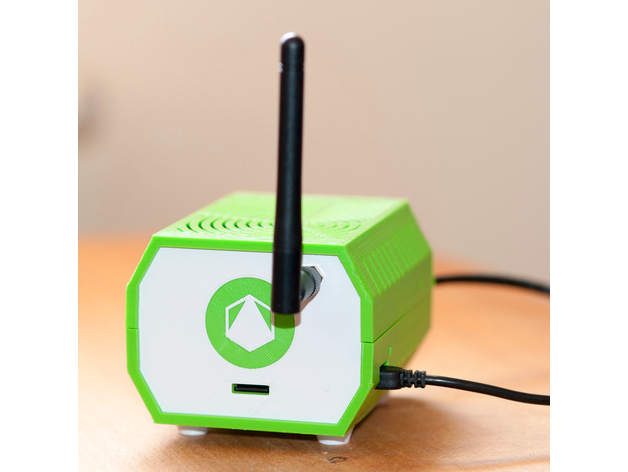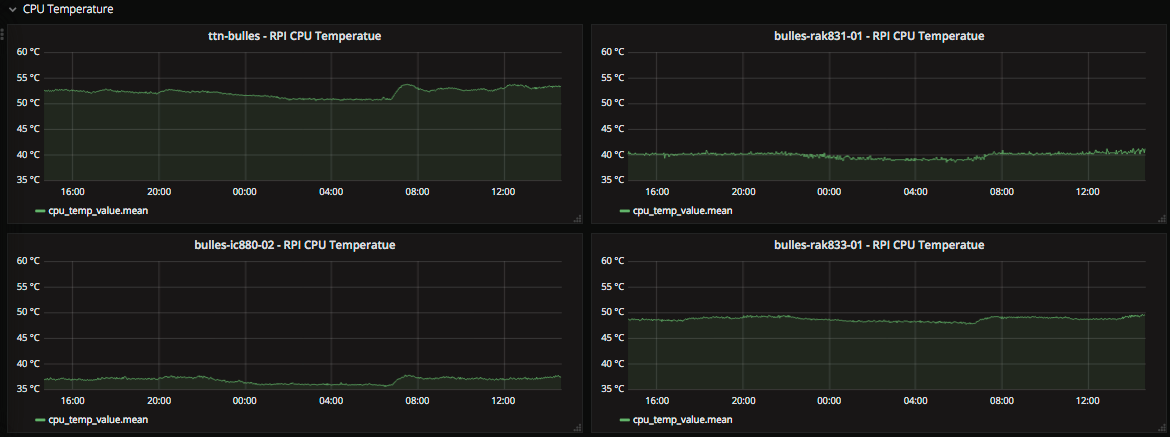Anyone did the complete testing before or make a comparison for the chip temperature on SX1301? Any difference in RAK831,RAK833 or IC880A?
It is an interesting topic as all in all my gateways are dissipating quite some heat.
I am not strictly interested in the chip temperature by itself, but the overall dissipated heat by my gateways.
Let me share my observations – it is not really scientific as my configurations are not identical, but it gives an overall good overview.
Not all Pi are equal!
First thing to mention when temperature is a concern is that the Raspberry Pi itself plays a role. It is not a secret that with its faster processor the RPi 3 gets hotter than the RPi 2 first generation…
For a similar environment the RPi 3 CPU temperature is about 7°C hotter than a RPi 2! (This is with low load, it get worse when under stress).
So when I can find and old RPi 2, I’ll use it instead of model 3…
RPi 2 (Left) vs RPi 3 (Right)

Configuration
To come back to the subject: comparing the different SX1301 based concentrators, I have 4 gateways with the following configuration:
- bulles-ic880-01 / ttn-bulles: IC880A - CoreDump Backplane - RPi3
- bulles-ic880-02: IC880A on the workbench (no enclosure), the concentrator has no impact on the CPU temperature (RPi Zero) (not very relevant here).
- bulles-rak831-01: RAK831 - RAK backplane - RPi2
- bulles-rak833-01: RAK833 - PiSupply backplane - RPi1 B+
All gateways are running the exact same software stack.
IC880A

Temperature in the case is around 40°C for ambient temperature around 20°C
The problem is when the gateway is in direct sunlight or when the ambient temperature goes beyond 30°C
Therefore I have fan which actively regulates temperature and start working when temperature inside the case exceeds 45°C
RAK831

When I acquired the RAK831, I went for a more open case design to improve passive cooling.
I would not put that one in the sunlight all day, but that was good enough to support heat waves we got during summer in Belgium!
In term of overall heat dissipation I don’t really see a difference between the IC880A and the RAK831
RAK833

I used the same case design as the RAK831, just changing the rear plate.
Measures
Here is what we measure at the RPi level:

The difference between the IC880A an the RAK831 is due to the RPi3 dissipating more and the closed enclosure design. I believe there is no difference in concentrator dissipation; I can’t easily swap the cases to prove this as the placement differs (I am building an enclosure for my second IC880A, but still missing some parts…).
The difference between the RAK831 and the RAK833 is more interesting and still intrigues me – as we can see, the CPU temp is about 8°C higher for the RAK833, but it does not seem to translate in real heat dissipation: when I measure the outside case temperature with a heat probe, I have similar readings for both gateways (around 40°C, maybe 1 or 2 °C more for the RAK833). My take on this is that the PiSupply adapter comes very low compared to the RAK or the IC880A backplanes, which makes that the CPU can’t dissipate that easily and also get more influence from the concentrator itself being just above.
I still need to find some time to run more detailed tests and better temperature capture inside enclosure (I only have a sensor inside the IC880A), but my impression so far is that the temperature which needs to be dissipated is not much different between the 3 devices – which is understandable as they all share the same SX1301 chip!
Obviously the RAK833 being more compact radiates the heat on a smaller surface, so the temperature of the device itself might me higher, but at a “global level” (outside case temperature) I can’t measure a significant difference between the RAK831 and 833. The radiator on the RAK833 definitely helps to dissipate heat.
What about performance?
Aside the temperature I am looking as well at the performance: how do they behave against the same node.
Here again we can only recognize that they all share the same chip: there is virtually no difference between the gateways:

Like you measure the core temp of the Raspi, what about measuring the core temp of the SX1301/1308? I have been looking at writing a Python script to access the SPI port of the SX chip to read out the temps.
Yes indeed…
But that should be implemented in the gateway software itself – you can’t access the concentrator concurrently with the packet forwarder.
Ultimately I don’t care too much about the chip temperature itself – as long as the heat is properly dissipated (heatsink, …) – ; I think measuring the environmental temperature (inside the enclosure) gives a better idea of the overall dissipation.
@Amedee, my gateways are water tight, the Pi, radio and antenna are contained in the one enclosure. Zero antenna cable, no penetrations which allow water to enter BUT the Pi and SX1301 are in full sun. The outside of the enclosure can reach 60C on a day with ambient temp of 45C. Therefore I am REALLY interested in the thermal impedance between the radio chips and the ambient air outside the enclosure.
Oh yes, I am not saying it is useless but it won’t be easy to get, this is why I was suggesting to have a temperature sensor inside the enclosure to measure the operating environment.
I can’t find a radio board which is adequately designed for heat transfer. Poor thermal transfer from the underside of the radio chip and RF covers over the top with poor thermal transfer from the top of the chip. Seems to me, the radio boards are designed for countries with cool climates.
I assume I will write a simple script to stop the packet forwarder, measure internal chip temperature and then re-enable the packet forwarder. If i’m fast, the temperature I record should be close to the temperature while the chip is operating.
I was mistaken, the SX1301/08 does not have an onboard temperature sensor, its the front-end RF chip the SX1257 that does. Don’t think they generated as much heat as the SX1301, so no real point investing time to read out its temperature.
I coudn’t find anything in the datasheet either – thanks for confirming.